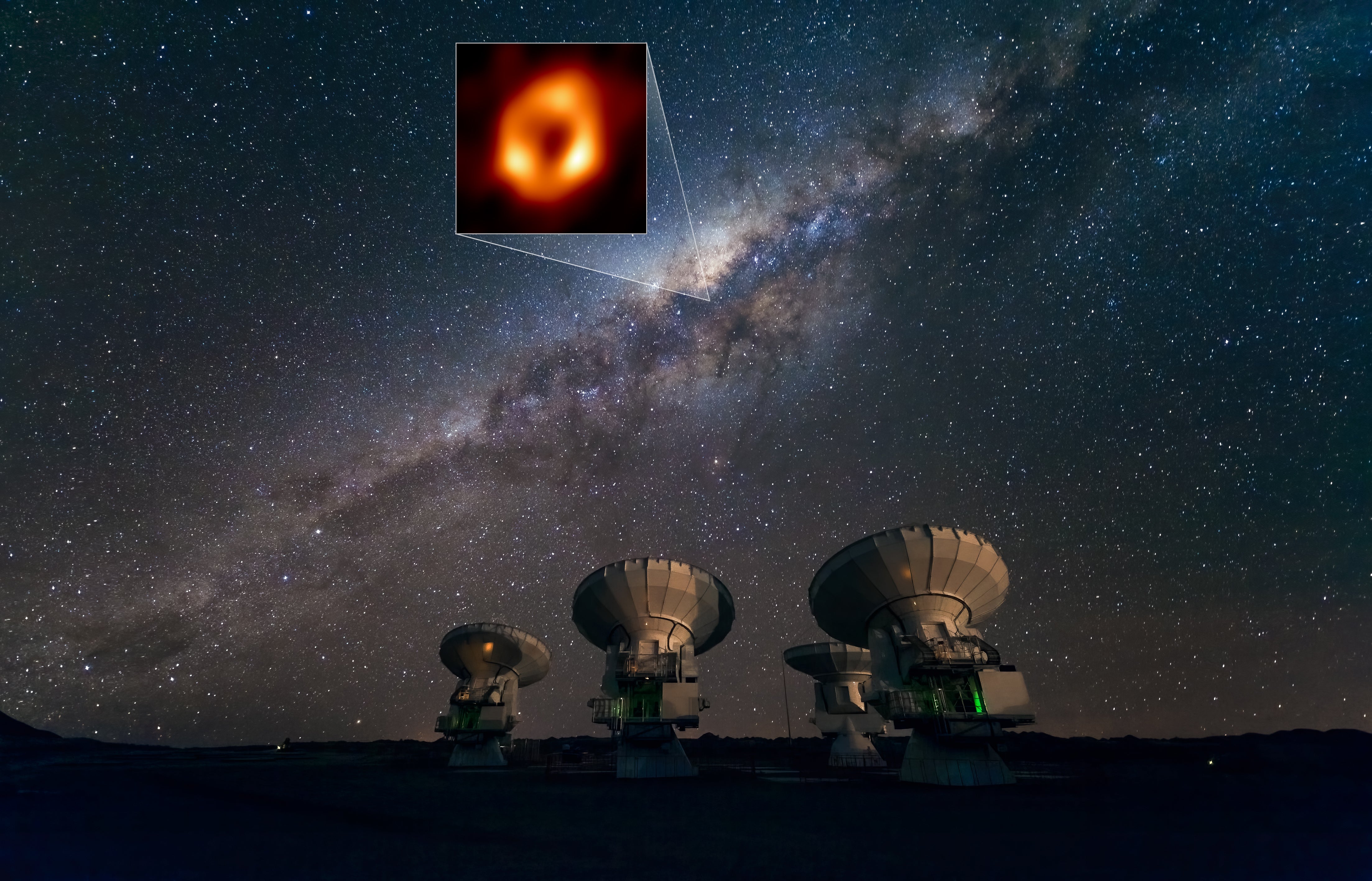
Tulika Bose: This is Scientific American’s 60-second science. I’m Tulika Bose.
Today—super massive news from space. The first image of the super massive black hole at the center of the Milky Way, Sagittarius A*, was just released by astronomers this morning.
I’m here talking to Seth Fletcher our Chief Features Editor for Scientific American. He literally wrote a book on the event horizon telescope, and is our resident expert on all things black holes. So Seth, what does it actually take to photograph a black hole?
Seth Fletcher: So, I mean, as you know, black holes are technically unseeable. They trap everything that falls inside, including light, anything that passes through the event horizon, which is the boundary, is trapped there forever. It can just never escape.
But super massive black holes, like Sagittarius A*, are surrounded by glowing obliterated matter that’s orbiting the black hole. Some of it’s falling in some of it just forms this disc around it and that stuff glows and the black hole because of the way it warps space, time around it because of the incredible force of gravity, it casts a shadow against that glowing matter.
And so that’s actually what we see in this picture.
Bose: So we know that astronomers captured this image with a worldwide network of radio observatories called the Event Horizon Telescope, or the EHT. That’s what you wrote book about. Can you tell me a little bit about this?
Fletcher: People figured out a few decades ago that you could collect a certain wavelength of radio light in microwaves. And if you could do it with a radio telescope, the size of the earth, you would be able to resolve something as small to us as the black hole center, the Milky way, or at least what people thought was there.
An amazing thing about radio astronomy is that there’s a technique called interferometry, that it lets you combine multiple dishes that are very far apart into a single effective virtual telescope.
Bose: It’s the biggest high resolution technique in all of astronomy. What does it actually mean, Seth?
Fletcher: There’s only a very limited period of time each year when telescopes in Europe, North America, South America, Antarctica can all see the same things in the sky. So they put together these elaborate schedule of when Sagittarius A*, for example, is gonna be up over the horizon and visible to what telescopes.
They just scan black holes for several nights. Then they take all the data in hard drives. Then they physically ship it to two super computer banks, one in Massachusetts, one in Germany, and then they correlate it all into a single data set. And then they search it for common detections where all of its telescopes have seen the same thing.
Bose: And why is this such a big deal?
Fletcher: This is only the second black hole we’ve ever seen directly, but it’s much cooler than that. This is sort of our own private, super massive black hole. This is at the very center of the Milky Way Galaxy.
It’s the solution to a mystery that people have been trying to solve for a really long time. Now that we get to see it, we get to see it change. We get to watch it in the future, and that could make possible all kinds of interesting science about gravity space, time, black holes, galaxy formation, who knows what people are gonna be able to cook up.
Bose: The astronomers also say that in the future, as they add more observatories to the EHT, they’ll even be able to make movies of Sagittarius A*. I guess that would look like videos of matter circling the drain before falling into an abyss.
For 60-Second Science, I’m Tulika Bose.
Stay connected with us on social media platform for instant update click here to join our Twitter, & Facebook
We are now on Telegram. Click here to join our channel (@TechiUpdate) and stay updated with the latest Technology headlines.
For all the latest For News Update Click Here
